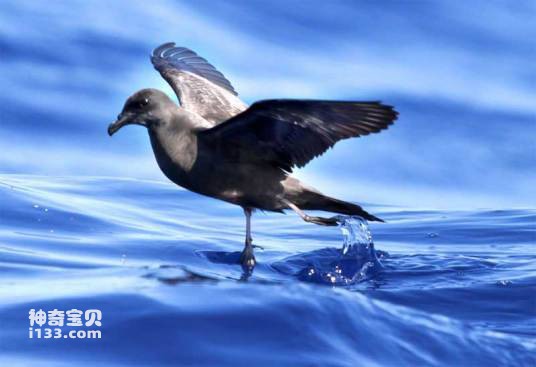Bulweria bulwerii
IUCN
LCBasic Information
Scientific classification
- name:Bulweria bulwerii
- Scientific Name:Bulweria bulwerii,Aestrelata bulweri,Bulwer's Petrel
- Outline:Waterfowl
- Family:
Vital signs
- length:26-29CM
- Weight:No textual research information is available
- lifetime:No textual research information is available
Feature
It looks like a giant petrel with long wings and a long tail, dark brown with a lighter underbody
Distribution and Habitat
Place of origin: Cape Verde, China, French Guiana, French Polynesia, Indonesia, Japan, Kiribati, Malaysia, Marshall Islands, Mauritania, Federated States of Micronesia, Morocco, Northern Mariana Islands, Palau, Portugal, Saint Helena, Ascension and Tristan da Cunha, Senegal, Spain (Canary Islands), Timor-Leste, United States (Hawaiian Islands).
Travellers: Australia, Barbados, France, India, Ireland, Italy, Maldives, Netherlands, South Africa, Sri Lanka, Trinidad and Tobago.
Source uncertain: American Samoa, Anguilla, Antigua and Barbuda, Brazil, British Indian Ocean Territory, Cambodia, Christmas Island, Cocos (Keeling) Islands, Cook Islands, Cote d 'Ivoire, Dominica, Ecuador, Fiji, French Southern Territory, Gambia, Guadeloupe, Guinea, Guinea-Bissau, Guyana, Liberia, Madagascar, Martinique, Mauri Cyprus, Mexico, Nauru, Papua New Guinea, Philippines, Pitcairn, Reunion, Saint Lucia, Samoa, SAO Tome and Principe, Seychelles, Sierra Leone, Solomon Islands, Somalia, Suriname, T
Appearance
The Shearwater is a small, active seabird resembling a petrel. Wings long and narrow, curved forward; The tail is long and narrow, wedge-shaped; The mouth is thick and short; The nasal duct is also short, located at the base of the rostral peak; Head, neck and entire upper body dark brown; The overlying feathers of the large wings are light brown, forming a distinct pale wing band; Lower body is light, mostly brown black brown; Underwing coverts and axils are also dark brown.
Iris dark brown, nasal tube blue, mouth black, mouth pink with blue; Inside feet pink gray, outside black, webbed black.
Size measurement: body length 260-290 mm; Wing 199-212 mm; Mouth 22-23 mm; Tail 105-119 mm; Tarsus 27-29 mm.
Details
Shearwater (scientific name: Bulweria bulwerii) foreign name Bulwer' s Petrel is a small gull-like seabird with no subspecies.

Most of the birds are resident birds, and a few often wander to the north and south seas during the non-breeding season. Like clusters, often in groups, usually very active, long time flying over the sea, flying with wings bent forward, head slightly down, tail often fan out briefly. Flying more powerfully than petrel, it often flutters down and circles high above. It feeds mainly on various small fish. Make a low "chuff" bark during the breeding season.
The breeding season is from June to August. They breed in herds on deserted coasts and islands in the sea. Nests are built on the ground of distant islands, under rocks, in coastal hanging caves or cracks in rock walls, and in soft mud or sandy soil. Each brood lays 1 egg, oval, white and 40-47 mm x30-33 mm in size, with an average of 43x31 mm.
Listed in the International Union for Conservation of Nature Red List of Threatened Species (IUCN) for 2016 ver 3.1 - Not Threatened (LC).
Protect wild animals and eliminate wild meat.
Maintaining ecological balance is everyone's responsibility!








